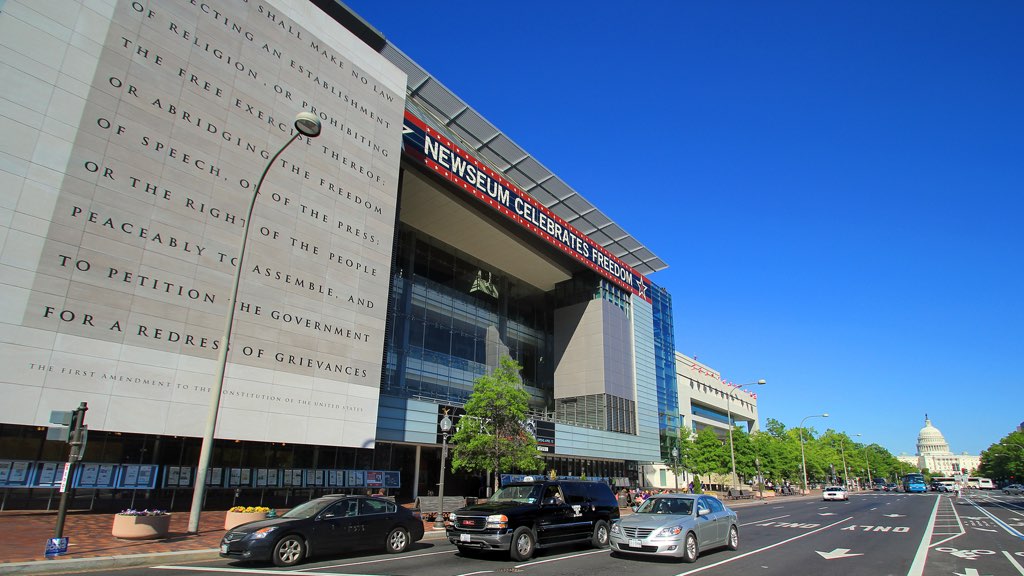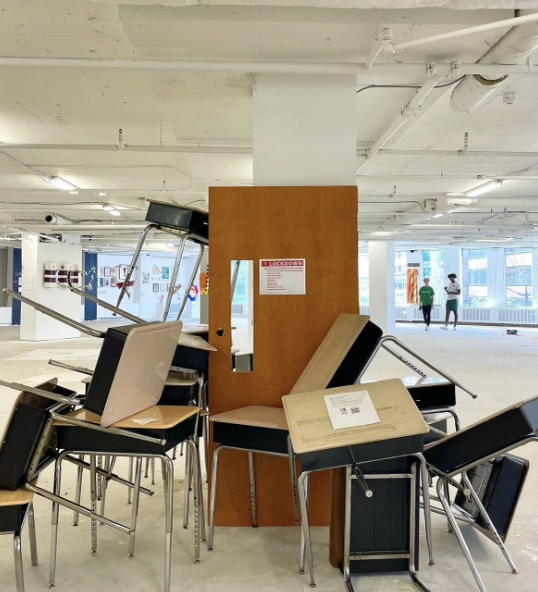Walk through the Newseum, and it’s almost as if the past two months haven’t happened. There’s a young Bill O’Reilly in a short clip about Fox News. There’s Matt Lauer talking about Twitter in a clip within a clip from The Daily Show. And in the gift shop, which spans two floors, there are “Make America Great Again” hats, FBI sweatshirts, T-shirts that say “well-behaved women rarely make history.” There’s, uh, also Al Franken’s book Giant of the Senate.
Cataloguing journalism’s past and future is the Newseum’s job. But the present is proving difficult to keep up with. It plans to continue selling Franken’s book, says Sonya Gavankar, the museum’s public relations manager.
And it has begun planning a “Power Shift Summit” for January 9, an event about changing newsroom culture in light of #MeToo and the Shitty Media Men list, featuring panelists like Politico Editor Carrie Budoff Brown, Vox Editor-in-Chief Lauren Williams, and Washington Post media reporter Paul Farhi.
But what about those exhibits? Gavankar says the Newseum doesn’t remove historical references, but is vigilant about updating material when they deem it appropriate. It is updating biographical material on both Lauer and O’Reilly in its newspeople database, she says, and it gave Roger Ailes the same treatment earlier this year.
The Newseum certainly wouldn’t be the first museum to have to deal with a suddenly toxic subject. The National Museum of African Art proceeded with an exhibition of artwork from Bill Cosby’s collection in 2014, posting a sign at the entrance reminding patrons the show was “fundamentally about the artworks and the artists who created them, not Mr. Cosby.” The National Museum of African American History and Culture had its own Cosby-related heartburn before opening, initially planning to show items relating the comedian’s career without the context of the accusations of sexual assault many women have made against him. It later reversed course.
The NMAAHC navigated the Cosby situation “very well,” says Andie Tucher, a professor at Columbia University’s journalism school. It “gave due notice to his undeniable achievements but the exhibition was also very clear about the assault charges.”
But Anne Donohue, an associate professor of journalism at Boston University, likened the Newseum’s dilemma to the issue people face when confronting how they feel about a Woody Allen movie, or like the removal of confederate statues. “Do you erase the history or do you put it in context?” she asks.
Presenting things precisely in context is arguably more within the Newseum’s remit than any other. The $450 million building is a shrine to journalism and all the mess it implies in this already bonkers 24/7 news cycle, from the display of current front pages out on the sidewalk facing Pennsylvania Avenue to glitzy evening events attended by the profession’s legends.
The museum faces financial pressures that uncannily mirror the industry it documents. Its costs have consistently surpassed its revenues. It’s laid off staff and in August announced that its president and CEO stepped down suddenly, launching a financial review that may lead to the sale of its building.
That deficit is unlikely to be closed by keeping Franken’s book on sale in the gift shop. So why not box them up and send them back to the publisher?
Gavankar says the Newseum “champions the rights of free press and free speech for all,” and that the store includes “a wide array of authors on many topics of history and current events.”
University of Toledo communications professor Paulette Kilmer doesn’t think books ever should be removed from a bookstore, no matter who the author is or what they’re accused of having done. And George Washington University assistant professor of media and public affairs Imani Cheers pointed out that it’s not just Franken we’re talking about here—President Donald Trump himself still has outstanding allegations of sexual assault against him, and you can buy socks with his face on them in the gift shop, too.


















